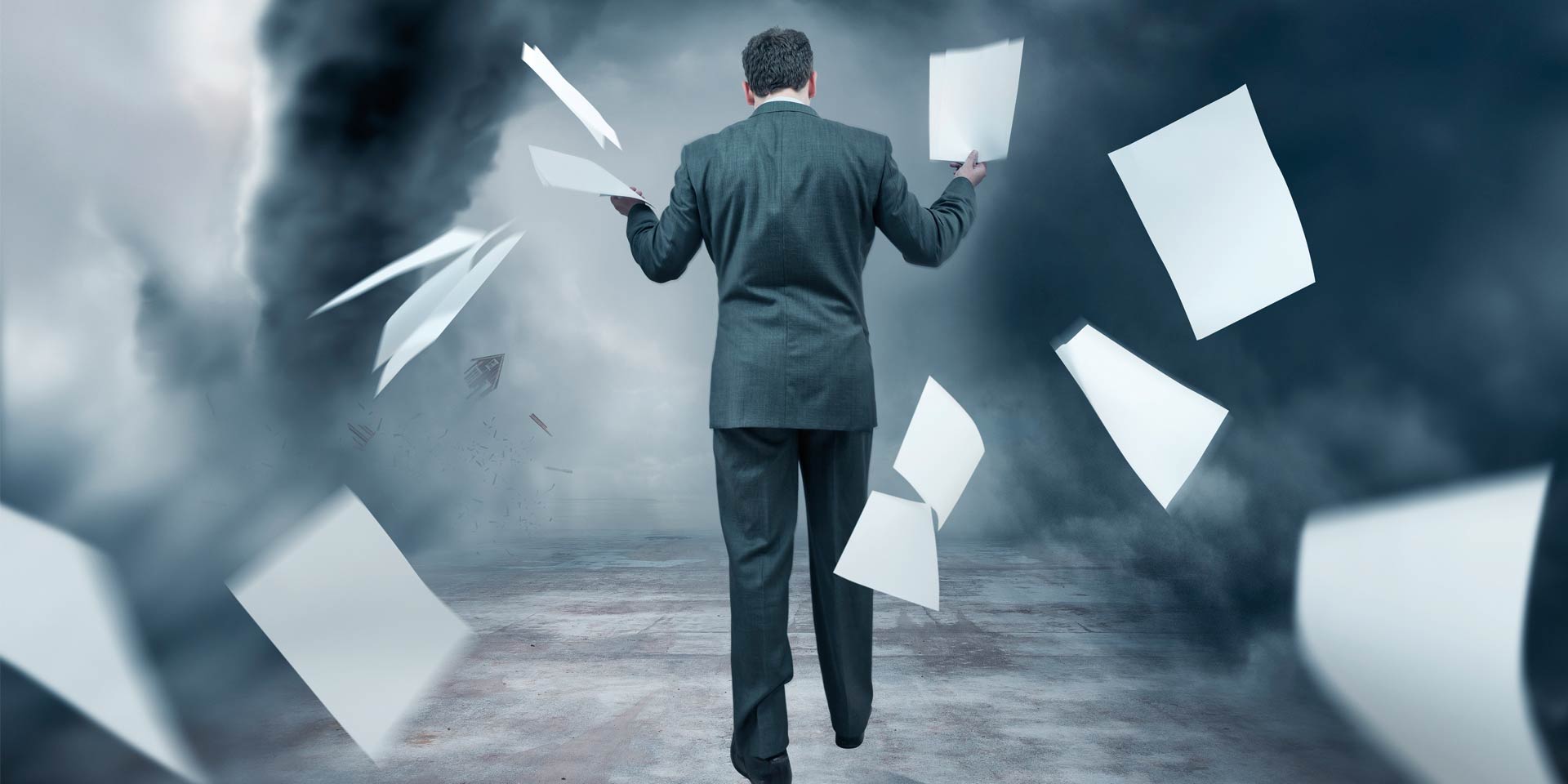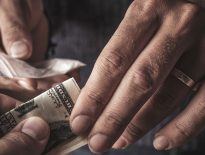Years of prosperity swallowed up in a few months of recession—that’s how you could sum up the global economic crisis that began in 2007. At its core, the worst recession since the interwar period turned out to be a mirror into which none of us want to look.
How could the entire US financial system be brought to the brink of collapse in a matter of weeks, and how did the reverberations spread so quickly around the world? These are questions whose full answers involve economic, political, social, and psychological factors. This complexity, reflected in the crisis’s far-reaching effects, makes it the most significant economic event of the last quarter of a century. The crisis has revealed an economic system that is characterised by interdependence and that is unstable in its operating principles.
The American dream turned into…
The beginning of the crisis was rooted in the end of another. The dot-com bubble, characterised by massive investment in unprofitable online companies that quickly went bust, destabilised the US economy in 2001. The Fed’s solution was to cut the interest rate on government bonds to 1%, a decision that was extremely beneficial for banks, which could borrow money at a very low rate, below the rate of inflation. Excess capital from Japan, China and the Middle East, also deposited or invested in the United States, contributed as well to the banks’ decision to lend to those who would not normally be considered eligible. Americans were willing to take on exorbitant mortgages as the housing market continued to rise. The banks were flush with cash, and if customers defaulted on their loans, they still made a profit on the sale of those homes. Moreover, the fees associated with such loans were not negligible. That’s how we got subprime mortgages—a lot of money given to people who were irresponsible or unable to pay it back.
From that point on, the risk-sharing mechanism[1] of these subprime mortgages became so complex that even those involved did not fully understand it. The irrational behaviour of the participants in the complicated system materialised in everyone’s preoccupation and subsequent certainty that they had found a way to banish risk, when in fact they had only lost track of it. When the average American who had taken out a loan defaulted, the bank took their house. So there was an increase in the supply of housing, but there was a shortage of buyers. For the first time in a long time, house prices began to fall—and they were falling fast. The banks now had a lot of derivatives[2] that were not worth half of what they were bought for. Having run out of money to lend, and having gone into debt (they had borrowed to lend or buy derivatives), the banks were in a bind: they had nothing left to pay their debts with. The whole system had brought them to the brink of collapse.
On 14 September 2008, news of the collapse of Merrill Lynch, one of the world’s top four financial services and investment consulting firms, sent the entire financial system into a panic. One by one, the institutions linked by these risky financial instruments—the largest investment banks, commercial banks and insurance companies—were heading in the same direction. These were the very institutions that were considered “too big to fail.”[3] Fearing a collapse of the system, the government stepped in. There was little it could do but pump money into the affected institutions. But it was too late: the contagion had already spread to the rest of the world.
…everyone’s nightmare
What followed is a perfect case study of the interdependence of the economic system. The first countries to be hit were the European countries with “toxic assets,” as the risky derivatives were called: the UK, Spain, Iceland, but also Germany, and Belgium.
The paradox was that banks that did not hold toxic assets and had no significant links to the US banking system were still affected. Joseph Stiglitz, a winner of the Nobel Prize in Economics, explains the reason for this paradox: “Financial markets hinge on trust, and that trust has eroded. The…financial crisis springs from a catastrophic collapse in confidence.”
Because of the lack of confidence, European banks refused to borrow from or loan to other banks. From that moment on, the crisis, which had been purely financial, became an economic one, as neither companies nor individuals were able to borrow easily. Production, consumption and trade were restricted.
The moment of truth
And while it was time to sweep the problems under the carpet, a few more were discovered in Europe. Greece was a case in point, with a budget deficit of almost 16% of GDP and public debt of 130% in 2009. At a time of economic growth, when no one was checking the financial situation and the accuracy of statistics, Greek leaders had spent irresponsibly and falsified statistics to make it look as if they were meeting the standards required to maintain the stability of the euro. When the problem was discovered, the single currency was in danger of being destabilised by a Greek default, and several successive bailouts were needed.
Other European countries had created the perfect recipe for recession before the crisis: a US-style speculative housing bubble, high levels of private and public debt, and stimulus measures to ease taxes in times of economic growth.
As for the rest of the world, it was hoped that Latin America, Africa and Asia would escape the contagion because their economic ties were not as strong. In Africa and Latin America, however, the crisis was spread through the banks, which withdrew their money from developing countries for fear of a liquidity crisis, leading to a fall in production and trade. In Asia the crisis was less intense because the Asian market was large enough to sustain consumption, but it was still felt in the form of falling production.
When all was said and done, no country remained untouched by the crisis, except one: Canada. What made Canada virtually immune to the financial crisis? A very well-functioning banking system, carefully regulated by the state. But Canada had also learned the lesson of prudence the hard way; the reform of the Canadian banking system in 1985 had come in the wake of a banking crisis.
The incurable optimists
In the midst of the disaster, two big questions were on everyone’s lips: “How could no one have seen what was coming?” and, more importantly, “How could such a disaster have occurred in the midst of booming economic growth?”
The answer to the first question is linked to one of the fundamental problems of economists: the impossibility of creating models that predict economic developments. Although based on consistent evidence, many of these models are contradicted by reality. Even in the case of economic models created as a result of past events, the complexity of the economic context, which includes the changing social behaviour of individuals, can lead to different results in two situations with the same variables. For this reason, economists and market participants have used this inability to predict as a justification for being taken by surprise.
It should be noted, however, that there were people who recognised the danger of a crisis, the most famous being Nouriel Roubini, Med Jones, Peter Schiff and Dean Baker. The latter announced[4] as early as 2002 that the United States had created a housing bubble. In the autumn of 2006, Nouriel Roubini explained the looming financial crisis in bullet points and expressed his conviction that it would not remain a US problem.
In fact, any astute analyst could have seen that prices were rising out of control, without any real basis and without maintaining the correlation with inflation and rents that had existed for decades. Surprisingly, this glaring reality was missed by even the most experienced in the system.
A more comprehensive answer has been provided by psychologists who have analysed human behaviour in the run-up to various types of crises, not just economic ones. In the face of uncertainty, they concluded, people tend to act on the basis of perceived risk rather than objective risk. Perceived risk is often created by extrapolating the past to the present. If the past is positive, such as house price performance up to 2007, the future is viewed with optimism and confidence. This unfounded optimism, coupled with greed, has led to a “disaster myopia” that has stricken most of society.
As for how it was possible for a crisis to occur even in the midst of an economic boom, the answer is an older one and comes as a confirmation of the business cycle theory. Two of the leading proponents of this theory were Karl Marx and John Maynard Keynes, who separately concluded that the economy constantly oscillates between economic growth and recession, and that the interval between the two cannot be precisely determined. There are, however, some signs that can predict each of them.
For example, all the periods of crisis that have been part of the cycle over the last century—including the Great Depression of 1929-1933—have had in common a deterioration in the moral sense, leading to the belief, supported by coherent economic theories, that you can earn without working, that you can make risky decisions and not face the consequences, that it doesn’t matter what effect your actions have as long as you take care to pass the problem on to your neighbour. But above all, the primary belief was that everything would be fine because everyone was doing the same and everything was going well. Hyman Minsky, a renowned American economist whose work became more widely known after the crisis, elegantly called this deterioration of the moral sense “euphoric economy.”[5]
There are still plenty of economists and ordinary people who hold the same “optimistic” beliefs, perhaps because they have not been hit hard by the effects of the crisis. Unfortunately, there are just as many who have experienced the painful truth first-hand.
The human face of the crisis
“Never in a million years would a guy like me think he would end up living in a vehicle… And here I am, it’s been my entire life now for four years,” James Frangella bitterly told Sky News journalists. Because of the crisis, he lost a secure, well-paid job, a spacious house and the chance to get a decent job. He said he was lucky to have found a place to park his car without the risk of being fined. His story, multiplied by four million other stories of people who lost their homes in the United States alone, speaks to the loss of a home, a dream, and a hope. Fortunately, not everyone who has lost their home ended up on the streets like James.
Of all the changes that have occurred as a result of the economic crisis, the social changes have been the most striking. The measures taken by governments to contain the disaster hit hardest those who were the least to blame. The worsening social situation was most clearly reflected in unemployment and street protests.
According to the Organisation for Economic Cooperation and Development (OECD), the number of long-term unemployed worldwide rose by 85% after the crisis began, reaching 202 million. The worst hit countries were Spain and Greece, where more than a quarter of the working-age population could not find a job. Youth unemployment was even worse in these countries. “I prepared myself for a world that doesn’t exist,” says Maria Ulldemolines, a university graduate from Spain, where the percentage of unemployed young people exceeded 55% in the first quarter of 2014[6].
The unemployment rate, together with the fall in wages, the rise in the price of consumer goods, and higher taxes, led to the discontentment of people who understood that the economic recovery was taking place at their expense. They could no longer be reassured by governments, given that the financial institutions or politicians who had triggered the crisis were quietly going about their business.
Protests soon erupted across Europe, led by the Icelanders, who in early 2009 sacked the government that had mismanaged the crisis. “Treason due to recklessness is still treason,” chanted angry demonstrators gathered outside the government. Iceland had gone from near-zero unemployment to a 500% increase in just four months[7].
The Greeks followed the Icelanders and were the most vocal about the harsh austerity measures, which proved to have little to no effect, leaving high unemployment, inequality, and poverty in their wake. The European Stability Mechanism (ESM), an instrument created by the European Union to protect the eurozone in the wake of the crisis, put even more pressure on the eurozone countries.
Faced with an increasingly bleak future, European countries looked for a scapegoat. Germany, a key decision-maker in the European Union, was accused of building its prosperity on the other countries’ backs. Whether or not this attitude was justified, it was based on a sense of mistrust and loss of control at the national level. While integration and stability remained the stated aims of the European Union, each state learned that it was better to watch its back. Greece had given a clear lesson in what it means to lose control.
In the United States, the billions of dollars in fines imposed on the guilty banks were a trifle compared to six times the amount used to bail them out and their annual profits.
On 17 September 2011, the Occupy movement, involving thousands of people around the world denouncing inequality at an all-time high, was a clear signal that a limit had been reached. “We are the 99%” was the slogan of the uprising, referring to the concentration of wealth in the hands of the top 1% of the planet’s inhabitants. Yet while the movement did influence some political decisions, it did not create the upheaval that many had hoped for.
At an individual level, the crisis manifested itself in a loss of hope for recovery. Impoverished, at the end of their tether, many decided to take their own lives. Statistics from 54 countries show a 3% increase in suicides after the start of the crisis, with higher rates in the countries hardest hit.
“People are scarred by the risk of something else going wrong, and are seeking safety, safety almost at any price,” said Andy Haldane, chief economist at the Bank of England.
An open-ended story
The recession ended in mid-2009, the US National Bureau of Economic Research (NBER) announced in 2010. Economists and ordinary people clung to the fragile growth of the US and European economies. And for a while, it looked like things were moving in the right direction.
However, the end of 2014 brought nothing but bad news: Japan entered a recession, projected economic growth failed to match the much more modest reality, and the unemployment rate was unlikely to fall any time soon. Increasingly, economists and politicians were talking about a second crisis, the real one.
European leaders repeated so often in 2014 that the end of the crisis was far off that it’s hard to believe they were all wrong. What’s more, no real changes were made to the US financial system, which still has serious problems with accountability and radical reform. The value of derivatives worldwide reached an unimaginable $700 trillion (by comparison, US GDP in 2013 was $16 trillion), while the US government was pumping money into the economy uncontrollably and the euro was in constant danger. When we draw the line, the one area where the world should have changed the most in the wake of the crisis, the economy, has changed just enough to keep us afloat.
Today, the core of the problem has remained the same. Not much has changed because, after all, the crisis is about us. It has exposed our greed, our fear, our lack of confidence and our failure to take responsibility. And we are unwilling to change, especially when we think the danger has passed. But let us not forget that those who do not learn from history are condemned to repeat it.




















